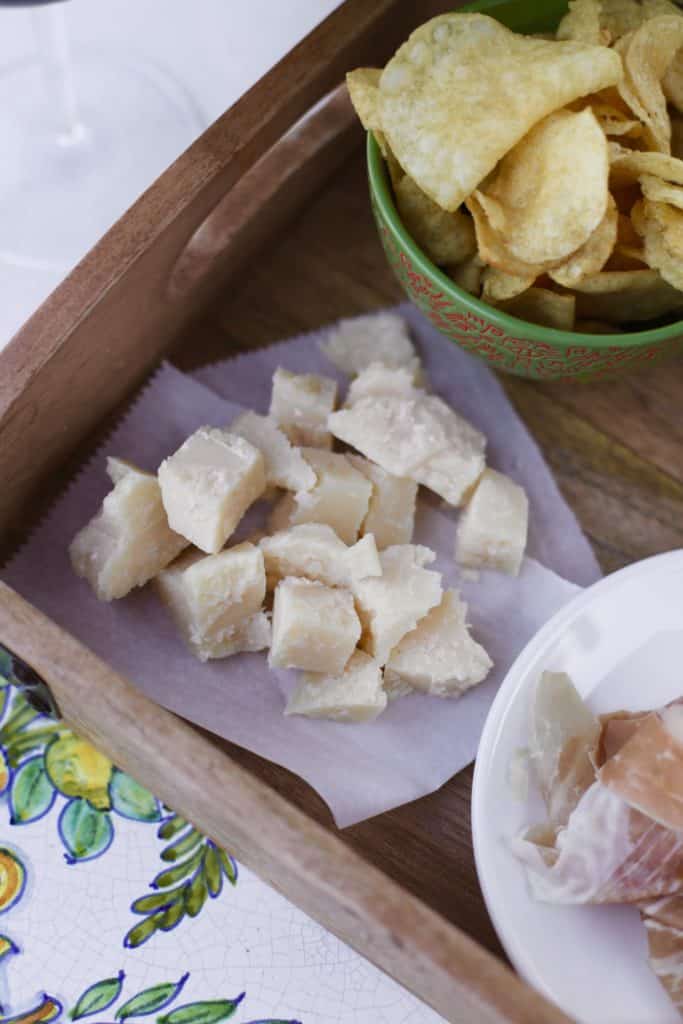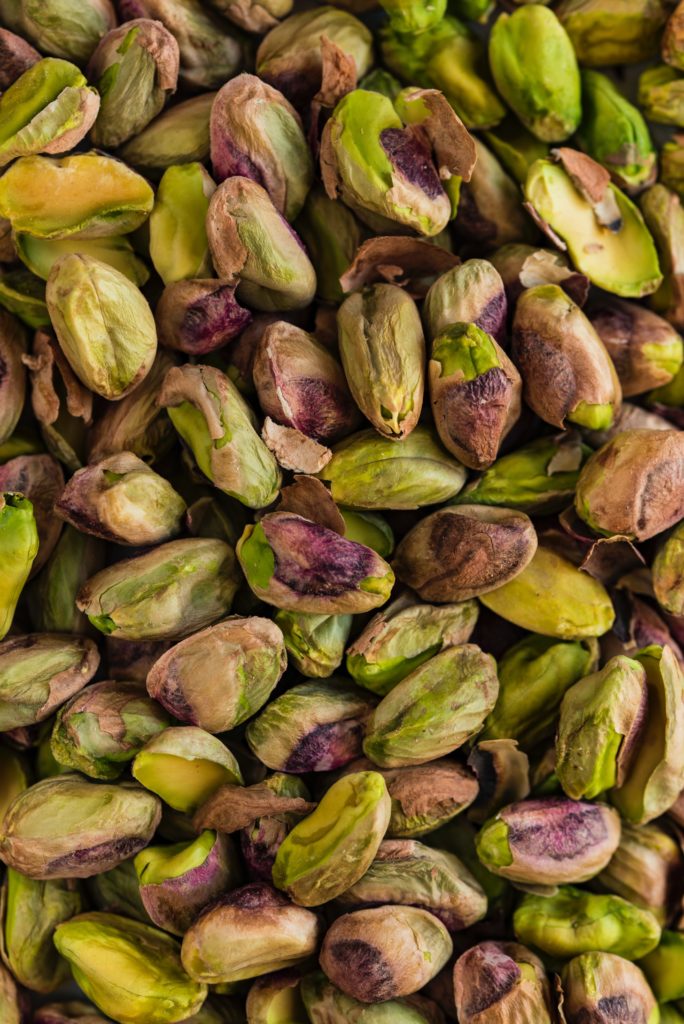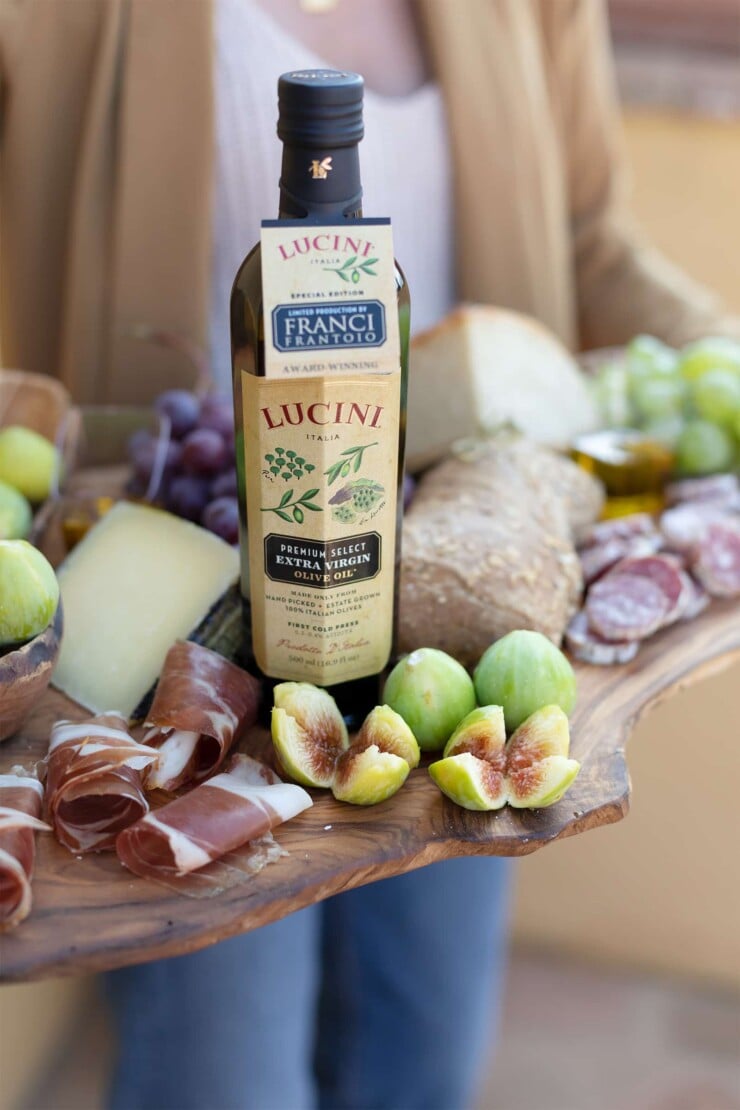You’re cooking up a storm of homemade Italian food when suddenly you realize your recipes might be missing some essential Italian ingredients to level up your dishes.
Sound familiar? If that’s a yes, you might want to check out this list of essential Italian pantry staples because if there’s a time when one ingredient can make all the difference, it’s with Italian food.

13 Essential Italian Ingredients To Keep On Hand
And sometimes all it takes is that quality olive oil, that special dash of umami, or the real-deal Parmigiano-Reggiano cheese to make your home cooking sing. Here we’re sharing how to choose the best Italian ingredients for your pantry because it can be tricky to know the real thing if you don’t see what you’re looking for.

Extra Virgin Olive Oil
You know olive oil is an all-around pantry workhorse, but did you know that not all olive oils are quality oils?
Regarding Italian extra virgin olive oil, insiders know some of the best liquid gold comes from Tuscany, Liguria, and Sicily. They all have different flavor profiles—though we like to refer to them as personalities. You’ll probably want several other bottles on hand for all kinds of recipes.
Sicilian olive oils are bold with bitterness, which work well as a garnish for roasted veggies and proteins. Olive oil from Tuscany is smooth and peppery (great for all-purpose cooking). And olive oil from Liguria tends to be rich, soft, and subtle and perfect for seafood and pasta and for making the famous local focaccia.
To make sure you’re getting the tried and true stuff, look for the DOP label on the bottle, which stands for Denominazione di Origine Protetta and is protected labeling used to preserve food traditions of iconic foods. In other words, it guarantees the olive oil is actually from Italy!
Use olive oil in: {Bibbonata} Tagliolini Pasta With Pine Nuts and Bottarga Recipe or Blood Orange Olive Oil Polenta Cake Recipe
Anchovies
Hear us out. Anchovies don’t always have the most stellar reputation here in the States, and we’re bummed because there’s a lot to love about them.
Italian anchovies are packed with salty, savory goodness. They may add that special kick to a salad dressing, pasta sauce, sandwich, and the iconic Piedmontese sauce known as salsa verde. In Italy – especially the southern parts like the Campania and Calabria regions – you’ll find anchovies in sauces, eaten with toast and olive oil, fried, baked, pretty much the works.
For your pantry, you can buy them packed in salt or olive oil. Just remember to remove the salt before cooking. Try Nettuno’s salted anchovies or Delfino Battista anchovies–it comes salted or oil-packed.
Use anchovies in: {Salsa Verde Alla Piemontese} Italian Herb Sauce Recipe
San Marzano Tomatoes
These uber-famous tomatoes will make any classic Italian or Italian-inspired dish shine, so make room in your kitchen for this pantry staple.
Pomodori di San Marzano gets so much love worldwide because they’re sweet, are less acidic, and have fewer seeds than other tomatoes. Authentic San Marzano tomatoes are grown in the Campania region, in Italy’s southwestern parts.
It just so happens that it’s also where Naples is located, or ground zero for Neapolitan pizza, where authentic Neapolitan pizza can only be made with these tomatoes.
At home, reach for a can to make pasta, lasagna, and pizza (of course). These tomatoes are DOP protected, too, so look out for that symbol, plus whether the tomatoes come in a can whole or fillets because, unfortunately, anything else might not be the real thing.
Use San Marzano tomatoes in: Pomodoro tomato sauce or Classic Ragu alla Bolognese Recipe

Parmigiano-Reggiano Cheese
If you haven’t used real Parmigiano-Reggiano cheese, add it to your Italian pantry list ASAP.
This Italian cheese is super crumbly and savory that we’d eat it on its own or with a drizzle of aged balsamic as the Italians do. You can also boost pasta and salads by grating fresh Parmigiano-Reggiano on top or serving it alongside fresh fruit and crackers. And be sure to save the rind so you can pop it into sauces, soups, and other recipes to punch up the flavor.
Strict rules for how it’s made–like requiring a 12-month aging process, minimum–and where it’s produced (the Parma region only, which they’ve been doing for 700 years, sorry, not sorry) means you’ll be stocking your pantry with high-quality cheese every time.
Meaning unless the cheese you’re buying is labeled Parmigiano-Reggiano or Parmigiano-Reggiano stravecchio (pronounced “straw-veh-key-oh” and meaning “extra-aged,” for two years or longer), the “Parmesan” you’re considering isn’t the different, Italian cheese.
Use Parmigiano-Reggiano in Celery Salad with Parmigiano-Reggiano and Walnuts Recipe or Herb, Ricotta, And Cheese Ravioli Pasta Recipe
Balsamic Vinegar
Nowadays, it seems like we put balsamic vinegar on everything, but did you know that the Italian condiment only became popular in the last century?
That’s because, in Italy, the tradition of making balsamic vinegar was mainly a family affair, and it’s only been 50 or so years since the country began exporting it.
To clarify, there are several categories of Aceto balsamico (pronounced “ah-che-toe ball-sahm-ee-koh”). The super-traditional version takes at least ten years to make. It must be made in Modena or Reggio Emilia.
There are only 300 official producers in Italy certified to make it. And, authentic balsamic vinegar is super pricey and will come with a DOP stamp. You may come across balsamico condimento, balsamic vinegar that has been aged for less than ten years and may or may not has been produced in Modena or Reggio Emilia.
Then there is balsamic vinegar made in Modena, but it may not be made from traditional grape varietals (like Lambrusco, Montini, and Trebbiano). These bottles will have the IGP-protected stamp, a geographical marker that means at least one stage of the product’s production, processing, and packing happened in that region.
So if you’re on the hunt for a traditional balsamic vinegar, choose a version produced in the Emilia-Romagna region.
Use balsamic vinegar in Sweet Potato Gnocchi with Balsamic-Sage Brown Butter Sauce Recipe or Poached Egg With Crunchy Quinoa And Brown Butter Asparagus Recipe
Rice
Another Italian pantry staple must-have is rice. But not just any rice, but short- and medium-grain varieties grown (mostly) in northern Italy, like Arborio, Carnaroli, Bardo, and Roma.
While India introduced it, Italians have been growing rice since the late 1400s. Nowadays, rice is grown all over Italy, but the Lombardy and Piedmont regions are where it all started.
So when you’re craving a rice dish, let Italy inspire you, such as with northern Italy’s iconic Risotto Alla Milanese (made with saffron and butter) or panissa, a traditional risotto rice and beans dish from Piedmont. There’s also risi e bisi, a popular springtime rice dish made with peas and Parmigiano Reggiano cheese, which you’ll find throughout Venice celebrating its patron saint, Saint Mark (April 25).
Use rice in: Risotto with Pears and Speck Recipe or {Supplì Al Telefono} Tomato Basil Risotto Balls Recipe
Gianduja
This versatile spread, referred to as gianduja (pronounced “jan-doo-yah”) – which Nutella is inspired by – is a must if you’re building an Italian-inspired pantry, especially if you’re as into desserts as we are (have you made our chocolate-hazelnut ice cream recipe yet?) And we’ve got Piedmont’s creative chocolatiers to thank for this creamy deliciousness.
See, the story goes cocoa supply was scarce in the 1800s, during the Napoleonic Wars, and later during World War II. Both times, Italian chocolatiers added hazelnuts to chocolate to stretch what little cocoa they had on hand. However, a narrative also suggests that this hazelnut and chocolate combo existed in France before then.
Early versions of Gianduia (the name comes from an Italian theatrical character) came as a thick block you could slice. Today, Gianduia comes as candy and a spreadable “cream,” similar to Nutella.
Use gianduja in Hazelnut-Chocolate Linzer Cookie Recipe

Dried Pasta
We’re all about fresh pasta when we can get it, but (good) dried pasta is where it’s at, too, because it’s shelf-stable, meaning we can reach for it at a moment’s notice whenever a pasta craving hits (which is often, tbh). That said, we like to get the traditional stuff made with durum wheat flour.
And bonus points if the pasta was dried at a low temperature to coax out all of the nutty flavors of the wheat and cut with bronze dies (which creates a rough texture for the sauce to cling to), like pasta from Martelli (from Tuscany) and Mancini, in the Marche region in eastern Italy.
Use dried pasta in Mezzi Paccheri Pasta with Burrata Cream, Guanciale, and Saffron Recipe or {Pasta Alla Checca} No-Cook Heirloom Tomato Burrata Pasta Recipe
Beans
Cannellini (Fagioli), garbanzo beans (known as Ceci in Italian), and lentils are like the jack-of-all-trades of Italian ingredients. They can support side dishes and spreads or be the star of soups, stews, and pasta. Beans are eaten all over Italy, including in regional words like chickpea-forward pasta e Ceci famous in the Lombardy and Piedmont regions.
Use beans in {Ribollita} Rustic Tuscan Bread And Vegetable Soup Recipe or Oil Packed Tuna And Arugula Salad Recipe
Cornmeal
When craving something warm and comforting like polenta strikes, having cornmeal in our pantry is a must. Not just any cornmeal, though, but preferably the kind made from a specific variety of corn–otto file (eight-row flint)–if possible for maximum flavor and a richer mouthfeel. In a pinch, medium to coarse-ground cornmeal works too.
The beauty of this porridge-like northern Italian staple is its versatility. Stir in butter or olive oil for extra creaminess and cheese for something different. Or, serve it alongside proteins, top it with roasted vegetables, or let it cool, so it hardens. Then you can go ham and bake, toast, or fry it before serving.
Use cornmeal in Basic Creamy Polenta with Melted Peppers and Mushrooms or {Torta Sbrisolona} Italian Almond Cornmeal Cookie Recipe

Nuts
No Italian pantry is complete without nuts like hazelnuts, pistachios, almonds, pine nuts, and walnuts, especially when making Italian sweets and baked goods. We’re talking ice cream, cakes, and other desserts like torta della nonna. Blend them into a classic basil pesto on the savory side of things and serve them as a light snack during aperitivo.
Use nuts in Torta di Ricotta e Polenta or Italian Walnut Shortbread Cookie Recipe
Olives
As far as classic Italian ingredients go, olives are indispensable. Please keep them in stock for everything from aperitivo hour to a casual backyard picnic to pair with bread and cheese or as a topping when making focaccia.
They’ll typically come in brine to temper their natural bitterness or be cured in olive oil. We’re fans of the green and buttery Castelvetrano olives from Sicily and the Taggiasca olives from Italy’s northwestern parts.
Use olives in: Smashed Green Olive And Pistachio Burrata Bruschetta Recipe or Zucchini and Ricotta Salata Bruschetta Recipe
Herbs
Whether dried or fresh, no Italian pantry is complete without herbs like basil, thyme, sage, rosemary, bay leaf, flat-leaf parsley, and mint. Between pasta, risottos, antipasti dishes, and roasted dishes to stocks and stews, one can never have enough of these classic Italian herbs.
Use herbs in One-Pot Lemon-Garlic Basil Artichoke Chicken Recipe or {Minestrone Verde} Spring Minestrone Soup Recipe
Get A Personalized Travel Itinerary

Learn All About Extra Virgin Olive Oil
Now that you’re versed in Italian ingredients, dive deep into extra virgin olive oil including how it’s made, how to store it, and how to tell when it has gone bad.
Have Us Plan Your Italy Trip
Looking to travel to head on a cooking trip to Italy? Our travel planning services are here to help — head here to get started!
Photography: Opening photo by Nataša Mandic, dried pasta by Patrick Tomasso, pistachios by Joanna, Kosinka, other photos by Team Salt & Wind Travel